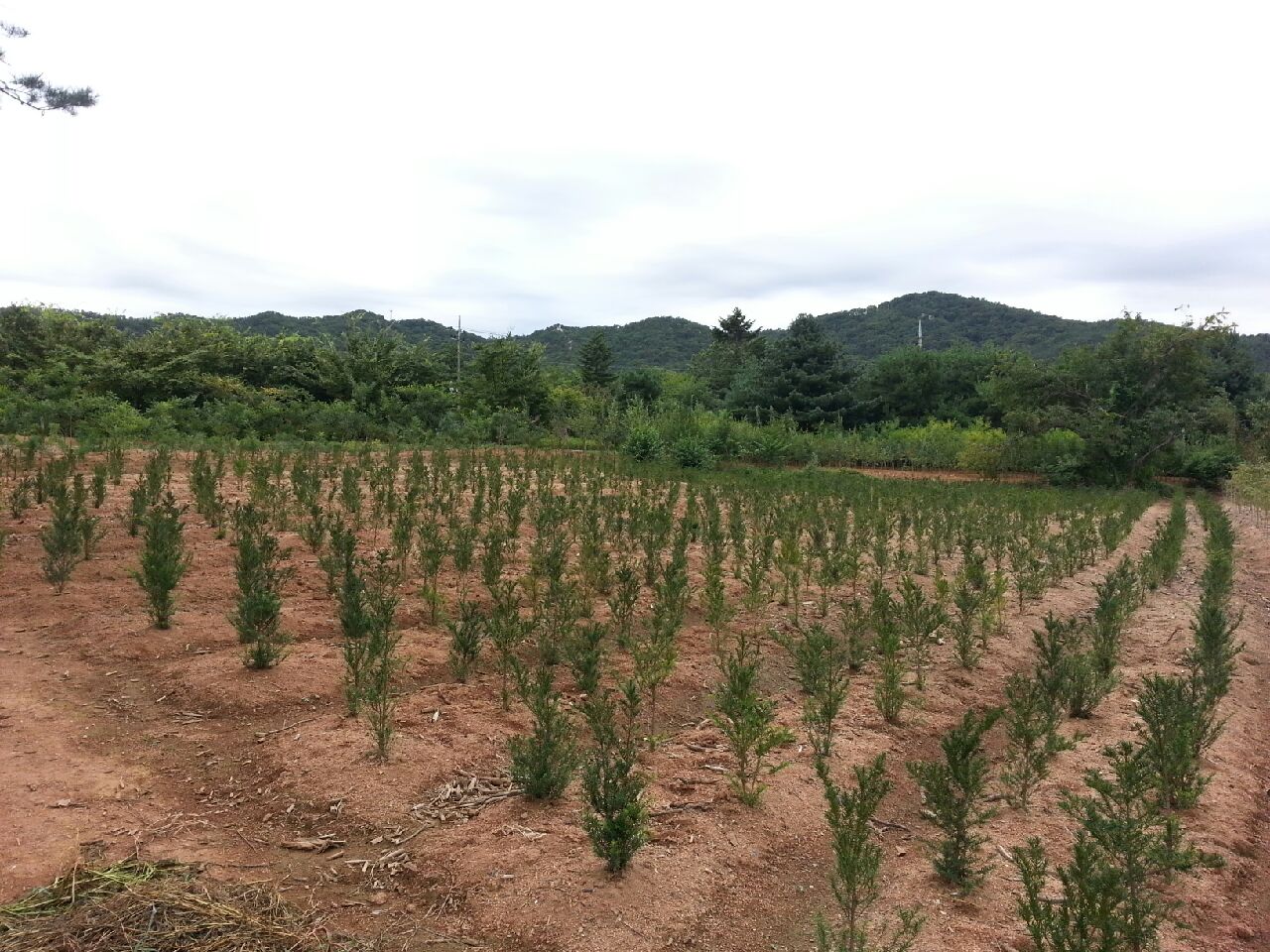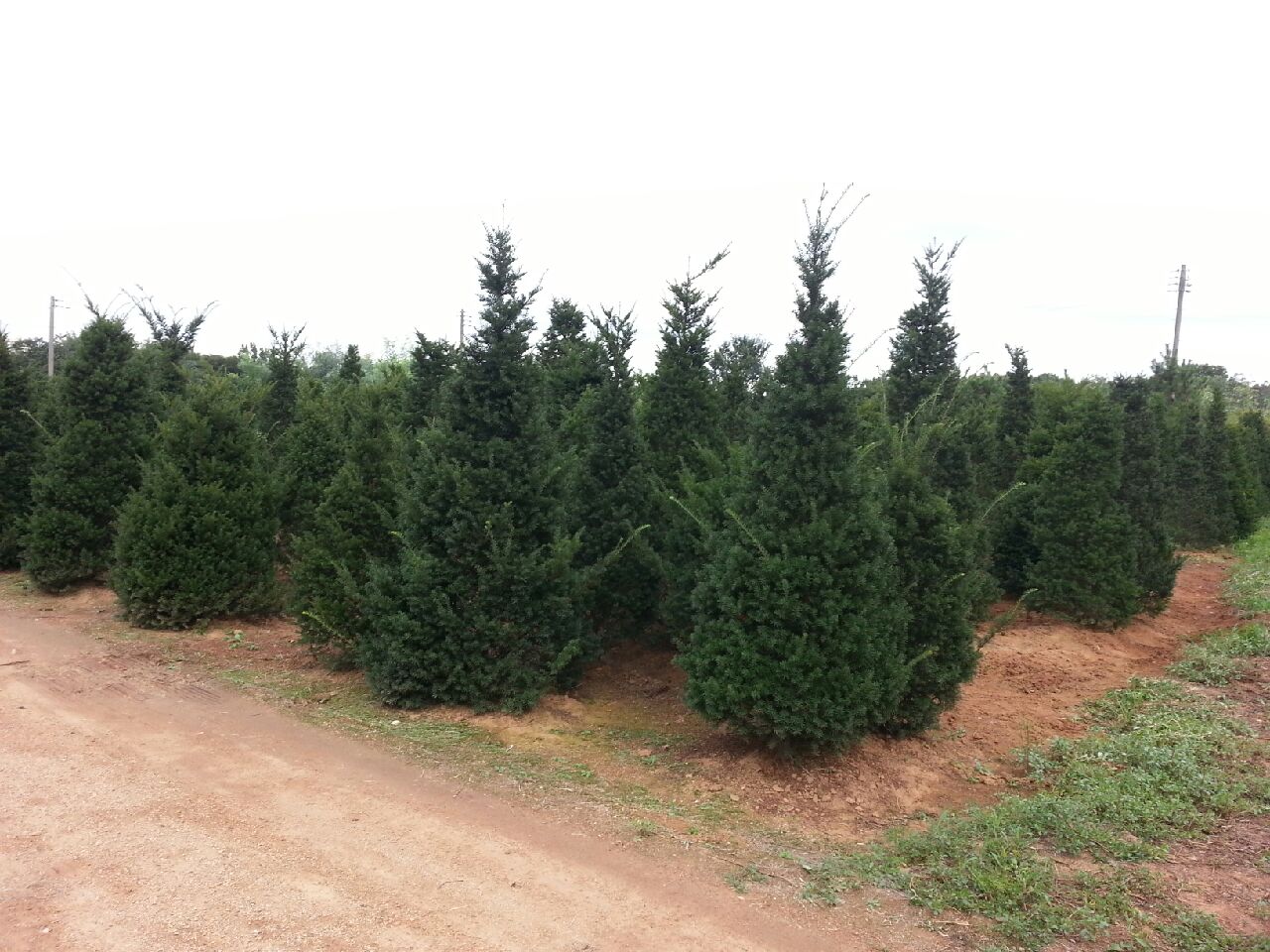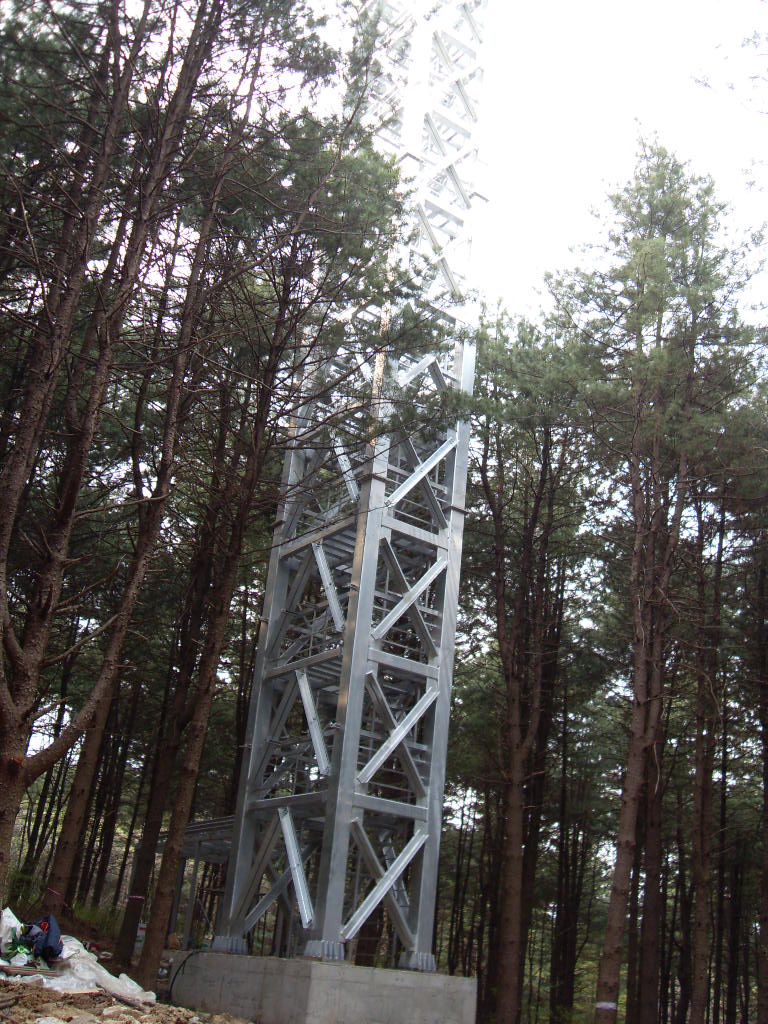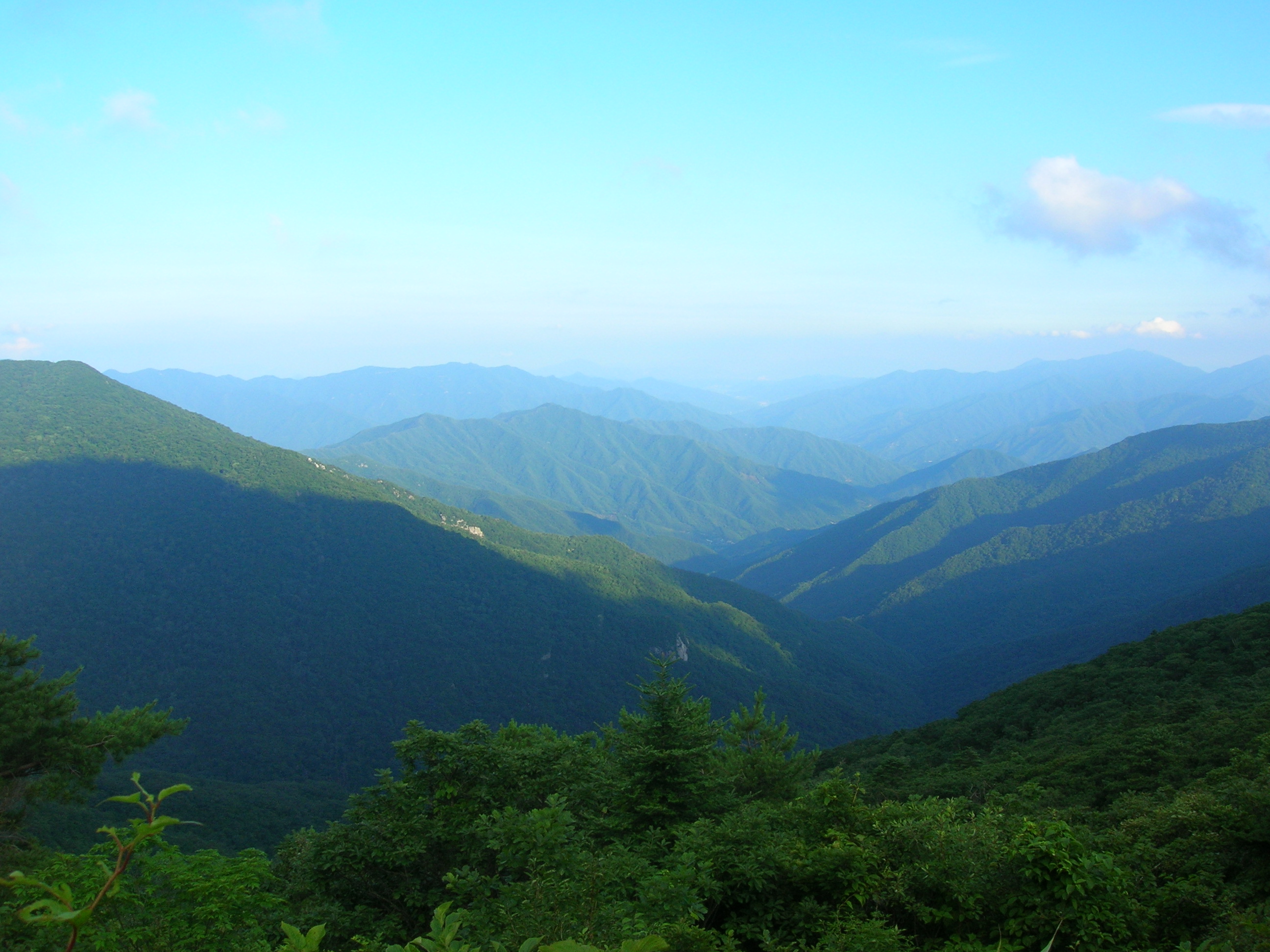Chilbosan
Site History and Description
Chilbosan University Forest was founded in 1928 with an area of 66.44 ha as public forest located in Gyeonggi Province and the Suwon Experimental Forest, the mother of Chilbo University Forest, was established in 1913. In 1939, it acquired an additional area of about 20 ha. Currently Chilbosan University Forest consists of 103 ha of forested areas and 15 ha nurseries by donated to some of parts of Mt. Jinae from Hyun, Jae Sun in 2012.
The Forest was initially a degraded land with a sandy type of soil which resulted to poor volume of stocks, hence, erosion control and stream stability measures were conducted using Pitch pine (Pinus rigida) and Alnus japonica. Pitch pine plantation of more than 60 years old is located at Chilbo Mountain. Coniferous forest makes up of about 80 % of the whole area while deciduous forest accounts for 20 % with Pitch pine as the main species. The mean height and DBH of Pitch pine are 8~10 m and 20 cm, respectively. The dominant species of the deciduous forest include Quercus acutissima, Quercus mongolica, Quercus dentata, Robinia pseudoacasia, Sorbus alnifolia, among others. The dominant species found in the under-layer of the deciduous forest are Rhododendron mucronulatum, Lindera obtusiloba, Smilax china, and Lespedeza bicolor among others.
In the nursery, 60,570 trees of 71 species and 150,000 saplings of 20 species are being raised. Selection for mother trees is carried out in seed orchards in Chilbo University forest in order to obtain high quality seeds.
Chilbosan University Forest has installed an automatic weather station for its long-term ecological research and for gathering weather data. Also, methods for raising seedlings of species suitable for reforestation of the urban environment are developed. Chilbosan University Forest is used not only as field practice site for professors and students of forestry, ecology, and environmental sciences but also as an educational site for the youth and the public.
The Forest was initially a degraded land with a sandy type of soil which resulted to poor volume of stocks, hence, erosion control and stream stability measures were conducted using Pitch pine (Pinus rigida) and Alnus japonica. Pitch pine plantation of more than 60 years old is located at Chilbo Mountain. Coniferous forest makes up of about 80 % of the whole area while deciduous forest accounts for 20 % with Pitch pine as the main species. The mean height and DBH of Pitch pine are 8~10 m and 20 cm, respectively. The dominant species of the deciduous forest include Quercus acutissima, Quercus mongolica, Quercus dentata, Robinia pseudoacasia, Sorbus alnifolia, among others. The dominant species found in the under-layer of the deciduous forest are Rhododendron mucronulatum, Lindera obtusiloba, Smilax china, and Lespedeza bicolor among others.
In the nursery, 60,570 trees of 71 species and 150,000 saplings of 20 species are being raised. Selection for mother trees is carried out in seed orchards in Chilbo University forest in order to obtain high quality seeds.
Chilbosan University Forest has installed an automatic weather station for its long-term ecological research and for gathering weather data. Also, methods for raising seedlings of species suitable for reforestation of the urban environment are developed. Chilbosan University Forest is used not only as field practice site for professors and students of forestry, ecology, and environmental sciences but also as an educational site for the youth and the public.
Location
Chilbosan University Forest is located in Suwonsi and Hwaseongsi, Gyeonggido. It is 6 kilometers west far from old Suwon campus of Seoul National University. It is situated at E125° 55‘-56' and N37° 16‘-17'. Chilbosan University Forest has the range from 50 to 234 m of altitude. The aspect of almost area is less than 10%. The topography of University Forest is L-shaped, and the highest peak is Mt. Chilbo (234m). Mean annual temperature is 12.4℃. Average of summer temperature is 24.3℃, and winter for -0.6℃. Soil is composed of sandy loam and loamy soil. Geological features of Chilbosan University Forest consist of Two-Mica Leucogranite.
Research & Education
Chilbosan University Forest installed automatic weather station for long-term ecological research and utilize the weather data. Also, it develops the technologies for raising seedling and species suitable for revegetation for urban environment. It is used not only as field practice site by professor and student concerning forestry, ecology, and environmental sciences but also as the field of education for the youth and the public.
Contact
Kang, Sang Ho
(+82) 31-292-5611
sanghok@snu.ac.kr
(+82) 31-292-5611
sanghok@snu.ac.kr


Planting ree in nursery
Taehwasan
Site History and Description
Taehwasan University Forest is established in 1979 by land exchange between 196ha Gwanaksan Experimental Forest and 803-ha public forests owned by Gyeonggido. Taehwasan University Forest is a beautiful forest consisting of plantation forests of Pinus koraiensis and Larix kaempferi and natural forests dominated by oaks. The area consists deciduous natural forests of 497 ha and coniferous plantations of 300 ha. Chestnut tree gardens were established with various chestnut varieties.
Most of its natural forest is dominated by oaks (Quercus acutissima, Quercus variabilis, and Quercus mongolica). Other species are Fraxinus rhynchophylla, Styrax obassia, Betula davurica, Prunus sargentii, and Cornus controversa. The plantation forest is composed of Pinus koraiensis and Larix kaempferi.
Most of its natural forest is dominated by oaks (Quercus acutissima, Quercus variabilis, and Quercus mongolica). Other species are Fraxinus rhynchophylla, Styrax obassia, Betula davurica, Prunus sargentii, and Cornus controversa. The plantation forest is composed of Pinus koraiensis and Larix kaempferi.
Location
Taehwasan University Forest is located in Gwangju-si, Gyeonggi Province situated at N°17′16″- 37°19′26 and E127°16′45″ - 127°19′51″. It belongs to the temperate zone, and has Mt. Taehwa (642 m) as its main peak.
Research & Education
Field practices such as forest ecology, wildlife management, clinic plant pathology and so on are performed every year. And over the 1,000 students, professors and staffs visit Taehwasan University Forest. Researches about soil moisture, insect fauna, effects of thinning in Pinus koraiensis etc. are conducted now. Taehwa University Forest is planning to make observation garden using research and education. In particular, atmospheric observation towers are installed in Mt. Taehwa. It was built by the National Institute of Environmental Research in May 2010 to observe carbon dioxide fluxes in forest areas. It uses this information to continuously monitor how forests affect global climate change and local air quality. As the role and importance of urban forests are emphasized, the demand suburban research is expected to increase.
Contact
Ha, Gi Ho
(+82) 31-763-5139
giho@snu.ac.kr
(+82) 31-763-5139
giho@snu.ac.kr

Taewhasan University Forest

Atmosphere Environmental Tower
Nambu
Site History and Description
Seoul National University had acquired the public forests of 15,647 ha in Jeollanam Province and established Experimental Forest in 1946. It had been established and managed by the Tokyo University since 1912. The name was changed to Nambu Experimental Forest, which was renamed again to Nambu University Forest in 2004.
Nambu University Forest is located between N35°21′- 35°58′ and E127°30′-127 °45′ in Jeollanam Province. It comprised two sections, Baekwoonsan (10,945.58 ha) and Jirisan (5,284.97 ha). The forest is characterized for the highest peak of SNUF, the Banyabong (1,751 m.). Mt. Jiri is located within the Jirisan National Park which is the first national park in Korea. Two Ecosystems and Landscape Regions for Conservation (ELRC) were established in the Jirisan and Baekwoonsan areas in 1989 and 1993, respectively.
Nambu University Forest belongs to the southern temperate zone which shows a vertical distribution of forest zones with diverse vegetations. The dominant species of the natural forest of Nambu University Forest are Oaks (Quercus serrata, Quercus mongolica, and Quercus variabilis), Carpinus laxiflora, Fraxinus mandshurica, Acer palmatum, and Pinus densiflora.
There are also other species such as Abies koreana, Abies nephrolepis, Pinus koraiensis, Abies holophylla, Betula costata, and Tilia amurensis in the sub-alpine zone at an elevation of over 1,000 m.
The plantation forests mainly comprised Abies holophylla, Picea abies, Chamaecyparis obtuse, Pinus thunbergii, Pinus rigida, Pinus taeda, Pinus ridi-taeda, Taxodium distichum, Magnolia obovata, and Acer pictum subsp. were established in Nambu University Forest. Since 1958 the total area of the plantation forests has increased to 1,400 ha.
Nambu University Forest is located between N35°21′- 35°58′ and E127°30′-127 °45′ in Jeollanam Province. It comprised two sections, Baekwoonsan (10,945.58 ha) and Jirisan (5,284.97 ha). The forest is characterized for the highest peak of SNUF, the Banyabong (1,751 m.). Mt. Jiri is located within the Jirisan National Park which is the first national park in Korea. Two Ecosystems and Landscape Regions for Conservation (ELRC) were established in the Jirisan and Baekwoonsan areas in 1989 and 1993, respectively.
Nambu University Forest belongs to the southern temperate zone which shows a vertical distribution of forest zones with diverse vegetations. The dominant species of the natural forest of Nambu University Forest are Oaks (Quercus serrata, Quercus mongolica, and Quercus variabilis), Carpinus laxiflora, Fraxinus mandshurica, Acer palmatum, and Pinus densiflora.
There are also other species such as Abies koreana, Abies nephrolepis, Pinus koraiensis, Abies holophylla, Betula costata, and Tilia amurensis in the sub-alpine zone at an elevation of over 1,000 m.
The plantation forests mainly comprised Abies holophylla, Picea abies, Chamaecyparis obtuse, Pinus thunbergii, Pinus rigida, Pinus taeda, Pinus ridi-taeda, Taxodium distichum, Magnolia obovata, and Acer pictum subsp. were established in Nambu University Forest. Since 1958 the total area of the plantation forests has increased to 1,400 ha.
Location
Nambu University Forest is located in Gwangyangsi and Guryegun, Jeollanamdo. The area is huge and its part borders on the Gyeongsangnamdo and Jeollanamdo. It’s location is N35°21′~35°58′, E127°30′~127°45′. Baekwoonsan area and Jirisan of Nambu University Forest.
Research & Education
Nambu University Forest has established 880 permanent plots to investigate vegetation change of natural forest, and figure out the structure of forest community to realize sustainable forest management. In addition, forest vegetation surveys are conducted to understand the structure of forest community for conservation and revegetation in Beakwoonsan area. Nambu University Forest investigates the flora of Mt. Jiri and Baekwoonsan area to grasp biodiversity and to found the conservation strategies. The current status of vascular plant’s distribution and information about habitat is surveyed. Local species distribution surveys are also conducted to use the information about habitat and distribution for the rare and endemic species which have high conservation value. The Forest conducts its own experiment to produce the data for field practice and management and supports the various researches such as Long-term Ecological Research, hydrological measurement, revegetation and monitoring of degrade land.
Nambu University Forest made the various specimen forests. Observation garden is one of the specimen forests. Its area is 10 ha and it has 13 thematic gardens. Observation garden has 64 families 314 species 6,350 trees (coniferous: 6 families 38 species, deciduous 58 families and 276 species), and 31 families 96 species plants. Beside, chestnut variety garden, Hibiscus garden, and arboretum is built up. By organizing the observation garden, the forests experiment program will be offered to local students from 2014. Also, Nambu University Forest makes species, cultivates mushrooms for education, observes weather, and makes an illustrated guide to Nambu University Forest for education.
Nambu University Forest made the various specimen forests. Observation garden is one of the specimen forests. Its area is 10 ha and it has 13 thematic gardens. Observation garden has 64 families 314 species 6,350 trees (coniferous: 6 families 38 species, deciduous 58 families and 276 species), and 31 families 96 species plants. Beside, chestnut variety garden, Hibiscus garden, and arboretum is built up. By organizing the observation garden, the forests experiment program will be offered to local students from 2014. Also, Nambu University Forest makes species, cultivates mushrooms for education, observes weather, and makes an illustrated guide to Nambu University Forest for education.
Contact
Park, Hak ki
(+82) 61-763-6817
hakki@snu.ac.kr
(+82) 61-763-6817
hakki@snu.ac.kr

Baekwoonsan in Nambu University Forest

